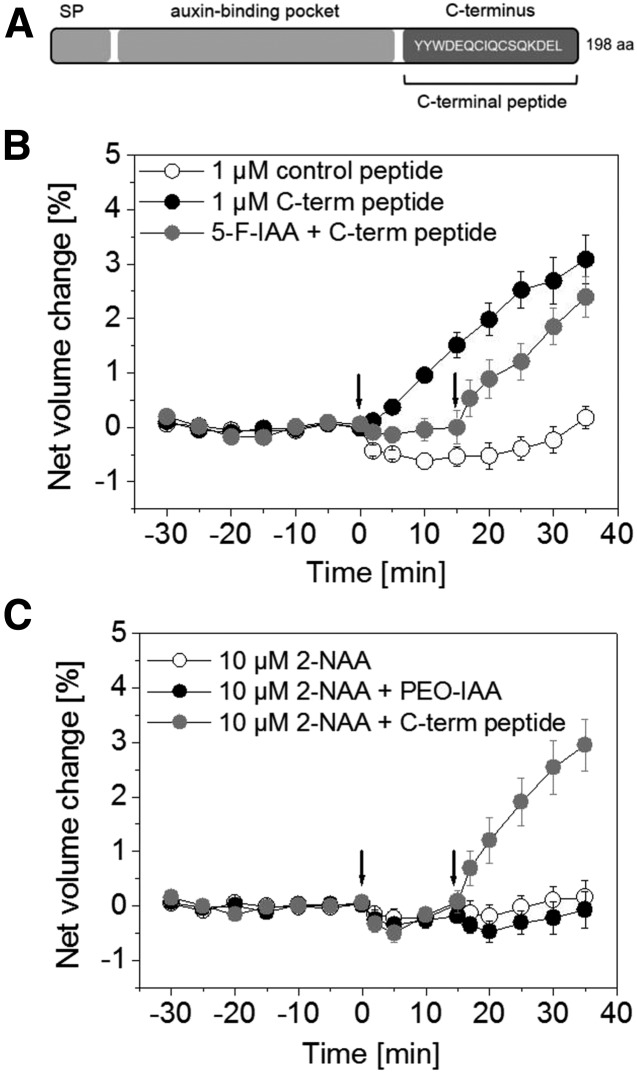Figure 3.
The C-terminal peptide of ABP1 induces an IAA-like swelling response. A, Model of ABP1 protein (not in scale) with the predicted signal peptide (SP), auxin-binding pocket, and the C terminus with the ER retention signal KDEL. The sequence of the C-terminal peptide used in this study is highlighted. It consists of the last 16 amino acids (aa) of ABP1. B, Protoplasts were treated with 1 µm of the C-terminal peptide (black circles) or with 1 µm of a control peptide (white circles) at 0 min (first arrow). A competition experiment using 10 µm 5-F-IAA plus 1 µm of the C-terminal peptide also is shown (gray circles). 5-F-IAA was applied at 0 min (first arrow) and the peptide at 15 min indicated by the second arrow. The C-terminal peptide induced a rapid increase in net volume also in the presence of 5-F-IAA. Results are means ± se from a minimum of n = 7 protoplasts from at least two experiments. C, Double treatments were performed to analyze if blocking of the auxin-binding domain of ABP1 by 2-NAA had an effect on the response of PEO-IAA or the C-terminal peptide. All protoplasts were treated with 10 µm 2-NAA at 0 min (first arrow). Protoplast swelling did not occur in 2-NAA-treated protoplasts (first arrow). PEO-IAA at a concentration of 10 µm and the C-terminal peptide at a concentration of 1 µm were applied at 15 min (second arrow). The response of PEO-IAA was inhibited by preincubation with 2-NAA, while swelling still occurred in the presence of the C-terminal peptide. Results are means ± se from a minimum of n = 9 protoplasts from at least two independent experiments.

